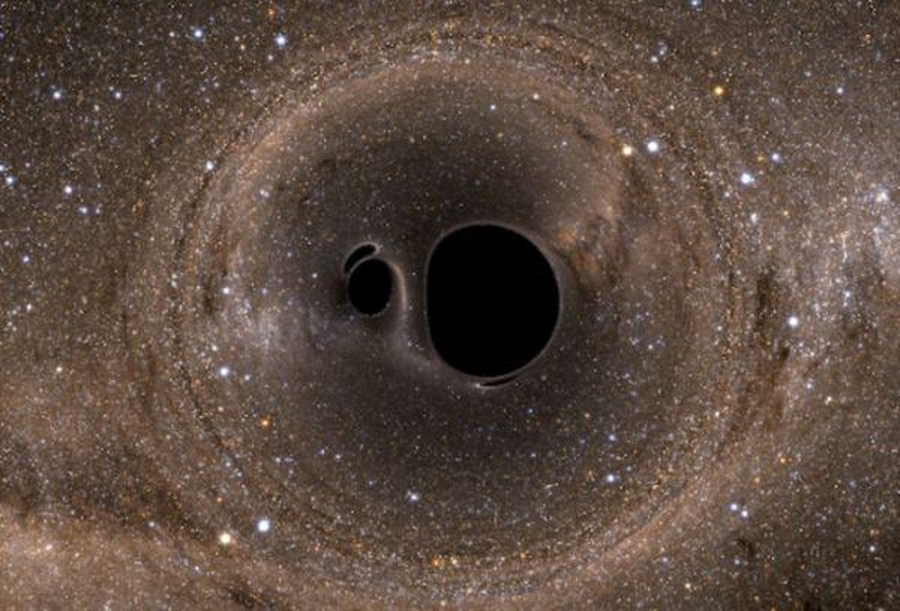
 Credit: A. Bohn et al.
Credit: A. Bohn et al.
Binary Singularities
Black holes are the most compact massive objects that exist; so compact, in fact, that nothing, not even light, can escape their gravitational grasp. Though the space inside a black hole's event horizon cannot be probed by anyone on the outside, black holes do have distinctive observable effects on their surroundings. As they swallow matter (and grow more massive), the accreting material may glow brightly in high-energy radiation as it spirals down onto the black hole; strong winds may blow off these accretion disks; and, just before it enters the black hole, material may be shot out into space in tightly collimated particle beams. Black holes don't just affect nearby matter; as Einstein first described, their strong gravity distorts the very fabric of space-time itself, bending the path of light and acting like a gravitational lens, distorting and amplifying the light from background objects. Isolated, non-spinning black holes act as relatively simple gravitaional lenses, but things get more complicated if the black hole exists in a gravitationally bound binary system with another black hole. For binary black holes, the orbital motion of the black holes around each other means that the gravitational distortion produced by the system changes with time. Now a new study has shown what the space-time distortions produced by a binary black hole system would look like to an outside observer. The image above shows a snapshot of the the complex gravitational lensing effects produced by a binary black hole system: the dark void of the black holes themselves, along with the distorted images of background objects. As Einstein also showed, such systems would lose energy by emission of gravitational radiation as the black holes accelerate in their orbits. As the system loses energy, the two black holes would eventually approach each other, moving faster and faster in their orbits, and eventually spiral together and merge. Astronomers hope that sensitive gravitational radiation detectors may one day be able to directly detect these gravity waves, and so determine how often black holes merge in our mysterious Universe.
Published: August 10, 2015
<
HEA Dictionary ● Archive
● Search HEAPOW
● Other Languages
● HEAPOW on Facebook
● Download all Images
● Education ● HEAD
>

Each week the HEASARC
brings you new, exciting and beautiful images from X-ray and Gamma ray
astronomy. Check back each week and be sure to check out the HEAPOW archive!
Page Author: Dr. Michael F. Corcoran
Last modified Monday, 26-Feb-2024 17:20:30 EST


